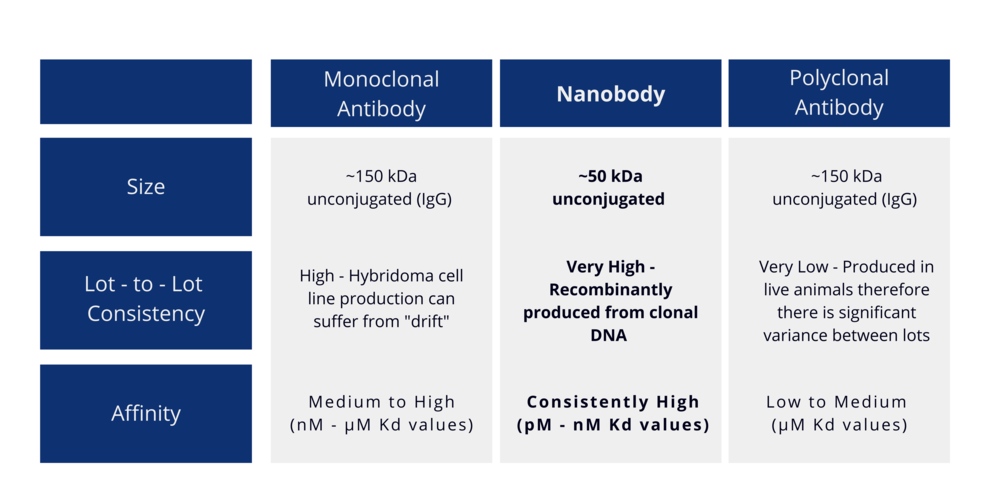Nanobodies have the potential to be very helpful in many lines of research. But what are they exactly and how far has nanobody research come?
How do Nanobodies stack up against other antibodies?

What are Nanobodies?
Nanobodies are single-domain antibodies derived from the variable regions of Camelidae (e.g., camels and llamas) atypical immunoglobulins. Camelidae possess fully functional antibodies that consist of only heavy chains. These single variable domains have full antigen binding capacity and are very stable.
Why use Alpaca Recombinant Secondary?
Recombinant alpaca secondary nanobodies have many advantages when compared to monoclonal or polyclonal antibodies. Firstly, these nanobodies are 1/10 the size of a traditional antibody. This means that the nanobody can penetrate tissue faster and deeper than other antibodies. Due to their simple structure, nanobodies also have the advantage of increased stability and ease of use. Comparatively, a nanobody is easier to develop and produce in the lab than monoclonal or polyclonal antibodies. Nanobodies are also more consistent and hold a very high affinity.

How can Researchers use a Nanobody?
Because of their versatility, nanobodies have the ability to pair well with almost any line of research. Many scientists are already taking advantage of the mighty nanobody and its benefits. Single-domain antibodies are being researched for multiple pharmaceutical applications and have the potential to make an impact in treatment for cancer, Alzheimer’s Disease, and acute coronary syndrome.
If you’re interested in using nanobodies in your research, check out our HRP Conjugated Alpaca anti-Rabbit IgG FC, Recombinant VHH Alpaca Monoclonal Antibody, Product Code: HA1031-HBO
